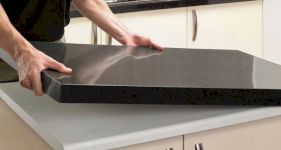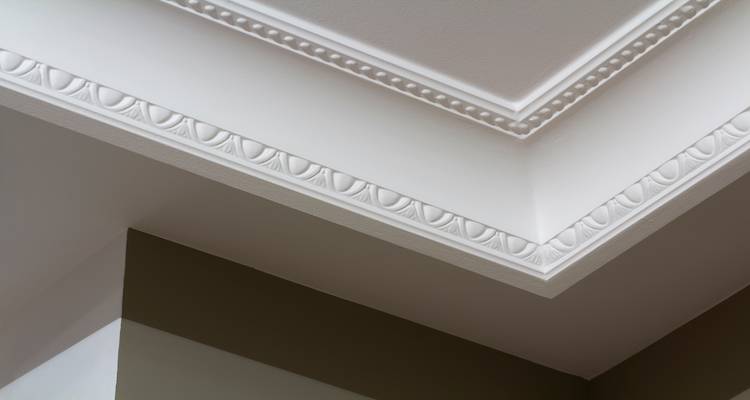Gas Fire Removal Cost
- The average cost of gas fire removal is about £75+VAT
- Depending on the complexity of the job, it usually takes 0.5 – 2 days
- A pricing breakdown for different types of gas fire and scope of work
- How long does gas fire removal take, and what the job entails
- How do you find a certified gas engineer to carry out the removal safely?
Is your gas fire old and inefficient? Take it out and modernise your space, save on energy bills and free up space for a new heating system. But gas fire removal isn’t a DIY job – improper handling can lead to leaks or big bills. That’s why you need to hire a Gas Safe registered engineer. This guide will tell you the costs involved and how to do it safely and efficiently.
On average, it will cost £90 to remove a gas fire, but this will depend on a few factors.
If you are looking for quotes from a gas-safe engineer, we can help you find a local engineer, too!
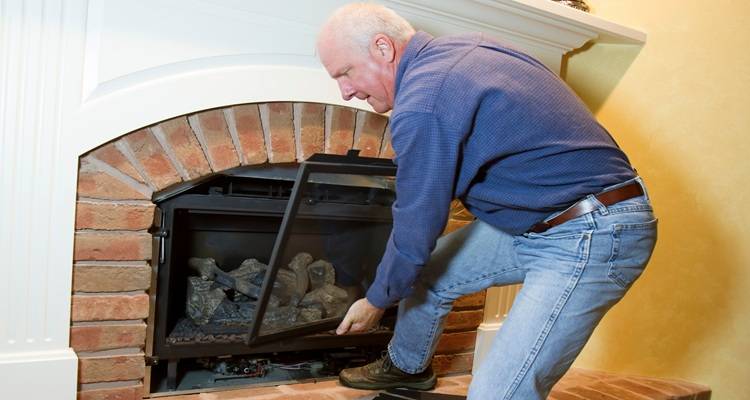
£90
Table of Contents
- How Much is Gas Fire Removal?
- Supply Costs for Gas Fire Removal
- Additional Costs for Gas Fire Removal
- Labour Costs and Timescales for Gas Fire Removal
- Cost Factors for Gas Fire Removal
- Building Regulations Related to Gas Fire Removal
- Types of Gas Fire Removal Methods
- Alternative Heating Options
- Hiring Contractors Checklist for Gas Fire Removal
- Removing a Gas Fire Yourself: Considerations and Costs
- FAQs
- Sources
How Much is Gas Fire Removal?
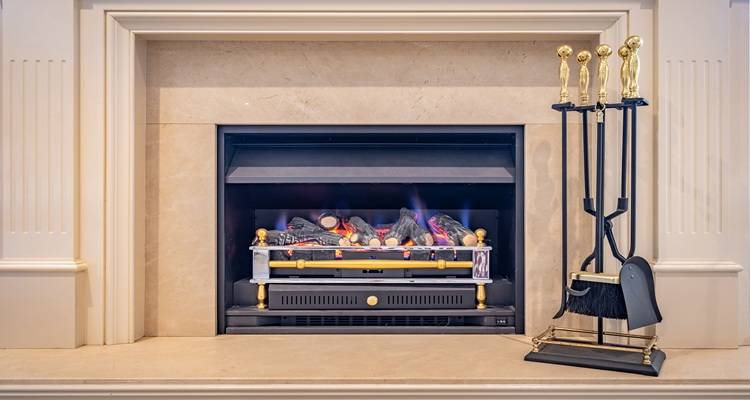
Getting a Gas Safe engineer to simply remove a gas fire and then cut and cap the gas pipe can be a relatively cheap job. You can expect to pay from £40 - £100 depending on where you live and the type of fire.
But often, a gas fire removal is more complicated and requires a larger budget, especially if you want the surrounding area changed. Removing a fire surround or hearth, or removing a chimney and filling the hole, can cost from £200 up to around £1,700, depending on the scope of the work.
Your quote from a Gas Safe engineer should include the required equipment and usually includes parts, too.
The cost of removing a gas fire or chimney can depend on:
- The condition and age of the fire:
Older fires can be more complex to deal with, and older chimneys may be full of rubble that needs removal.
- Type of surround:
The materials the surround is made of can affect cost – for example, a stone surround will take longer to remove than a surround that’s not built in. The type of surround will also impact the cost of repairs to the area after the fire is gone – a ragged hole full of rubble where the stone has been broken down will take longer to make good than an existing fireplace behind a gas fire.
- What you’re putting in place of the fire:
Simply removing a fire and leaving a hole is a straightforward job, but if you want to fill in the hole or fit another type of fire, such as a log-burning stove, additional work will be required, pushing up the price.
- Location:
This applies to both the location of the gas fire (is it easy for an engineer to access?) and the location of your property – areas with a higher cost of living tend to be more expensive to hire tradespeople.
In the table below, a simple gas fire removal will be at the lower end of the pricing, while a removal requiring repairs to the surrounding area or modifications for a new fire will be towards the higher end.
Gas Fire Removal Prices
You want to know how much it takes to remove a gas fire, so let’s get to the numbers. This table breaks down the average cost for some common gas fire removal situations.
| Average cost +VAT | Range, low-high | What’s involved | |
|---|---|---|---|
| Cost of gas fire removal | £75+VAT | £40 - £100 | A gas safe engineer removes the fire and safely caps off the gas pipe |
| Cost of removing hearth and surround | £350+VAT | £200 - £500 | This involves the removal of the surrounding parts of a hearth. If the gas fire itself has a built-in surround, an engineer may need to remove it. |
| Cost of removing a chimney | £1,350+VAT | £1,000 - £1,700 | A simple gas fire removal may leave you with a bulky chimney breast or an unattractive and unfinished hole in your wall. You can employ a builder or plasterer to remove this and cover the area. |
Supply Costs for Gas Fire Removal
You should never attempt to remove a gas fire or cap a gas pipe yourself. Use a Gas Safe certified engineer.
The supplies required to remove a gas fire include a cap for the gas line, pipe sealing materials such as tape and jointing compound, and plastering materials to make the wall good.
The supplies for capping gas pipes are usually included in the cost of a Gas Safe engineer. Plastering materials are usually included in the quote of a plasterer and builder.
If you’re considering plastering the wall yourself, you’ll need to take into account the costs of plasterboard, filler, tools, and paint.
Additional Costs for Gas Fire Removal
These are some common ways that your gas fire removal cost might be bumped up.
- Wall repair and plastering if the hole left by removal leaves a messy gap. You may also find you need to lay new flooring if the fireplace surround is large.
- Waste disposal – you may choose to dispose of the old gas fire yourself, but if your gas engineer removes it for you, this may involve a removal and disposal fee.
- Chimney cap installation – if you do not intend to use the chimney for a new fire, it can be more energy-efficient to cap the chimney itself. This keeps in the heat, keeps out rain and wind, and stops debris from falling into the fireplace. A chimney cap is an additional cost to gas fire removal.
- Chimney breast removal – if you have a chimney breast that you want to be removed after a gas fire has been taken out, this can be a big job, and it’s best to get a professional with the right equipment to carry it out.
- Log burner installation – if you’re replacing an old gas fire with a modern log burner, it’s advisable to use a HETAS (Heating Equipment Testing and Approval Scheme) registered installer to make sure the installation is done safely.
- Skip hire – although you don’t need a skip for a standard gas fire removal, if you’re also demolishing a chimney breast or removing a large surround, you may need to consider it.
Labour Costs and Timescales for Gas Fire Removal
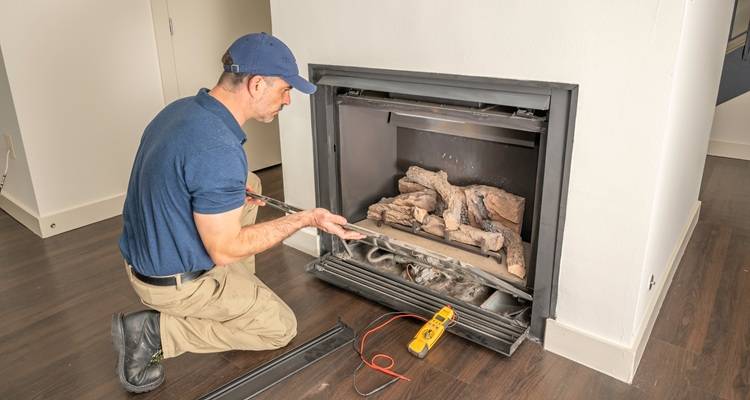
Certified gas engineers often charge a flat rate for a simple gas fire removal. However, if the job is more complex, they may charge an hourly rate. The average hourly rate for a gas engineer is £100 - £150 per hour.
A standard gas fire removal generally takes around 1 – 2 hours, for simply removing the fire and capping the pipe. However, if the job is more complex, for example, involving sealing the flue or repairing the wall around the fire, it will take longer, around 3 to 4 hours.
Cost Factors for Gas Fire Removal
These factors may have an impact on the total cost of your gas fire removal:
How old is the fire?
Older fires can be more difficult to remove.
Where is the fireplace situated?
If it’s difficult to access, gas pipe capping takes longer than standard.
What is the fireplace or hearth made of?
Built-in fireplaces made of iron, stone or concrete may require more intensive removal.
What’s behind the fire?
An old fireplace can quickly be made into a feature, but a ragged hole in the wall takes more time to make good. The larger the hole, the more extensive the patching and plastering required to fill it.
Does the chimney or flue need sealing?
This is a more intensive job than simple gas fire replacement and will have increased labour costs associated with it.
Building Regulations Related to Gas Fire Removal
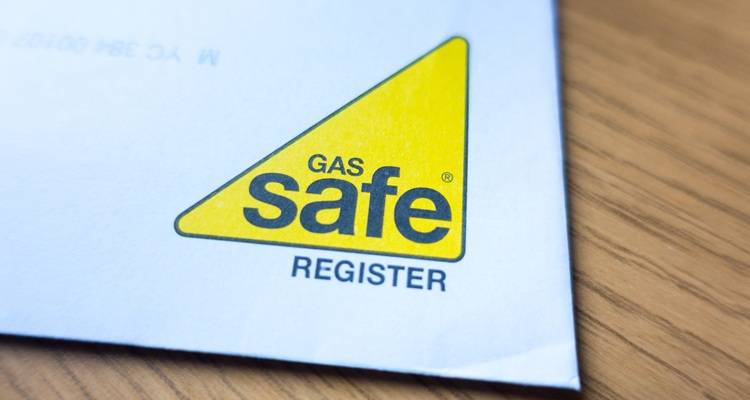
Gas fires must be installed and removed according to UK government legislation, specifically the 2010 building regulations for combustion appliances and fuel storage systems.
Only Gas Safe registered engineers are legally permitted to disconnect, remove or repair gas appliances. Your engineer will ensure your gas fire removal adheres to building regulations and safety codes related to gas line capping and ventilation.
Types of Gas Fire Removal Methods
Gas fire removal ranges from a simple hour’s work for a certified engineer to several days of building work. From simple to complex, common removal methods include:
Basic Disconnection and Removal of Gas Fire
This does what it says on the tin – a Gas Safe engineer disconnects the gas supply to your fire, removes the fire from the wall and safely caps off the gas supply pipe, sometimes sawing the pipe to situate it below floor level. This basic job usually doesn’t include any making good of the wall or removal of the old fire or waste rubble. You’re left with rubbish disposal and DIY work to do.
Full Removal with Flue/Chimney Sealing
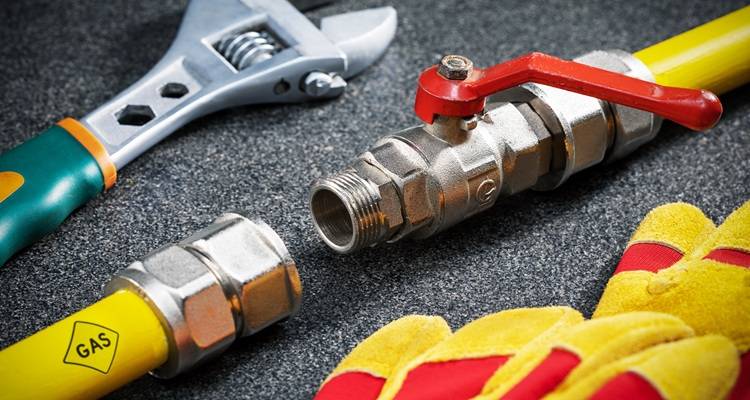
If you’re getting rid of your fireplace entirely rather than replacing it with a new fire, this is the recommended option. An engineer will remove the fire safely, cap the gas pipe and seal the flue/chimney to insulate the room. You’re left with a sealed chimney hole but may have DIY work to do to finish the area.
Removal with Wall Repair
If you want a smooth wall where your gas fire was, this is the recommended option. Some certified gas engineers offer this service along with gas fire removal, or you can employ a builder or plasterer to come in to finish off. The job will involve the safe removal of the fire, removing any debris from the chimney, patching the hole and plastering it over. You may be left with some DIY work painting the wall.
Alternative Heating Options
What will you put in place of your gas fire? Modern heating options are often more efficient, and their design is more up-to-date and attractive than old-fashioned gas fires. Here’s a brief guide to the types of heating you might consider.
Electric Fires
Electric fires can save money compared to gas fires, are often straightforward and can fit into the same gap without too much work. It may require an electrician to run power to the fireplace, although plug-in options are available as the fastest and cheapest option.
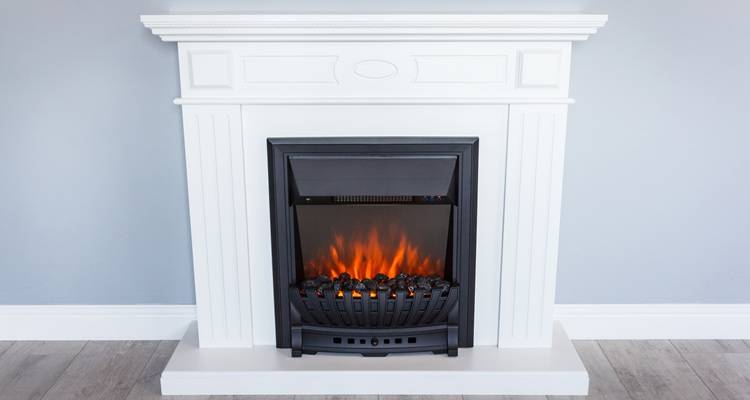
Log-burning Stove
This is a popular option that can add a cosy real fire to a room while keeping a sleek modern design. You may also save money with a log burner, as wood fuel can be cheaper than gas. However, log burners only heat one room at a time and will need to be combined with other heating methods. It’s recommended that you use a HETAS-registered installer to fit a wood stove.
Bio-ethanol Fire
This type of fire produces a flame but does not require a chimney or flue, so it can be a good option if you want to make space by removing a chimney breast. Although the cost of the fire itself might be more than that of a gas fire, fuel costs can be lower, and they are usually ready to go out of the box and do not require complex installation.
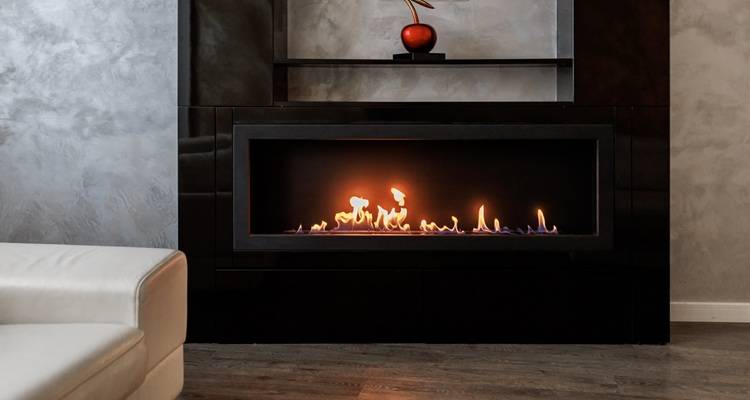
Energy-efficient Central Heating
Installing an energy-efficient boiler and devices such as smart meters can require a significant investment. Installing a new combi boiler can cost from £1,500 - £4,000, with new radiators at an extra cost. But these options can save you money in the long term, as your energy bills are reduced. How much you’ll save will depend on the type of heating throughout your house and the size of your house.
Hiring Contractors Checklist for Gas Fire Removal

- Verify Gas Safe registration to ensure legal compliance:
This is your first and most important step – is this contractor on the Gas Safe Register? Use the Gas Safe online tool to check the engineer. To check the Gas Safe Register, you’ll need the 7-digit license number, which the engineer can provide you with. You can ask for this number beforehand or check the engineer’s ID card for the number when they arrive at your house. Any legitimate registered Gas Safe engineer will be happy to share their license. - Ask about experience with gas fire removal and chimney sealing:
Check the engineer’s Gas Safe license card – on the back of the card, there is a list of jobs the engineer is qualified to carry out. Look for the category “Fire/Space Heater.” This means the engineer can carry out gas fire disconnection and breakdown. You can also ask the engineer about their experience with your type of fire and chimney set-up. - Request a detailed quote covering disconnection, sealing, and repairs:
It’s advisable to get a quote that’s broken down into separate tasks. Although you must use a gas-safe engineer to remove a gas fire and seal off the pipe and chimney, you might be able to carry out repairs to the wall yourself or employ a separate tradesperson to do that part of the job. - Check for insurance coverage and client reviews.
Gas Safe engineers should have insurance, most importantly public liability insurance. You should ask to see the insurance details. - Clarify the disposal plan for the removed gas fire unit:
Will the engineer take away the old gas fire as part of the price, or will you need to dispose of it yourself? What about any rubble or debris from the chimney area? Make sure these points are clear before the job starts. - Agree a timescale
Ask for a time estimate for the job based on your gas fire and surround type.
Removing a Gas Fire Yourself: Considerations and Costs
You should never attempt to remove a gas fire yourself. Working with gas appliances is dangerous, and a badly capped gas fitting can cause fires, explosions, lethal gas leaks and carbon monoxide leaks.
It’s illegal to carry out domestic gas work without being Gas Safe registered. Only certified gas professionals should carry out gas line disconnection.
It’s also illegal to carry out work yourself and then have it checked by a professional – you must employ a professional to carry out all the disconnection work.
Aside from the serious safety risks to DIY gas work, gas line disconnection is a complex task that requires training and knowledge to be carried out effectively.
Attempting the work yourself is likely to lead to further costs for fixing mistakes. There are also costs involved in purchasing gas capping kits and safety equipment that will be included in the fee you pay to a gas professional.
Once a Gas Safe engineer has removed your gas fire and capped off the supply pipe, you can safely carry out further DIY work, such as removing a fireplace surround, filling the hole and plastering yourself.
Be aware that if you are plastering the hole left by a gas fire, you may need to fit an air vent. Your gas engineer can advise you on this.
FAQs
Is it expensive to remove a gas fire?
Do I need a professional to remove a gas fire?
Can I take the case off my gas fire myself?
What happens to the gas line after removal?
Can I replace a gas fire with an electric fire?
Sources
The Building Regulations 2010 Combustion Appliances and fuel storage systems
https://www.britishgas.co.uk/heating/guides/trusted-gas-engineer.html
https://www.gassaferegister.co.uk/gas-safety/gas-appliances/gas-fire-appliance-guide/
https://www.gassaferegister.co.uk/gas-safety/the-gas-safe-id-card/
https://heatable.co.uk/boiler-advice/wood-vs-gas-heating

